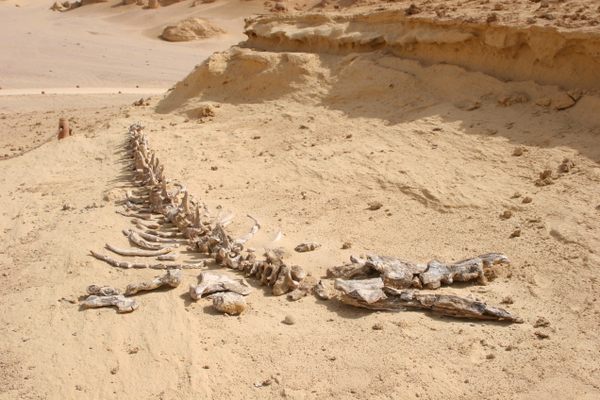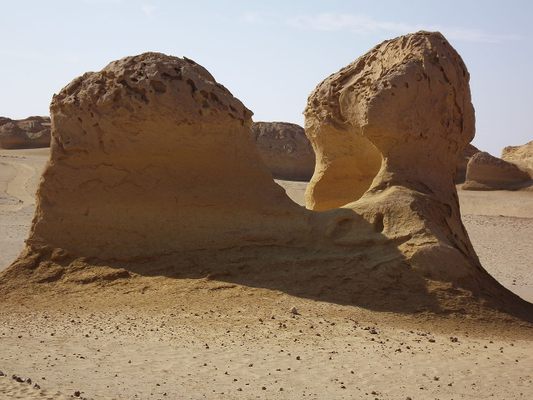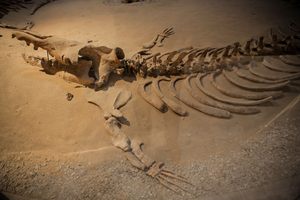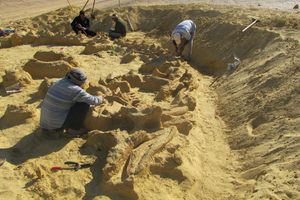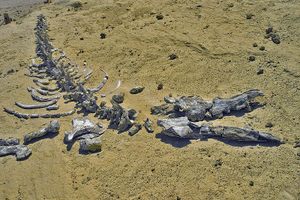About
Few sites in the world speak of an evolutionary tale as rich and captivating as that of Wadi al-Hitan, Egypt's "Whale Valley." There, amid a wind-sculpted landscape of sand and rocks, lies a large collection of the most unexpected of animal remains—whale fossils.
To be exact, the scattered bones belong to a long-extinct suborder of whales known as archaeoceti. What really sets these ancient creatures apart from your ordinary, modern-day cetacean is one odd, yet profoundly important, anatomical difference—hind legs. This critical deviation in the fossil record of whales is the basis for the notion that the massive seafaring beasts we know today began their existence as land-based animals.
But since their discovery in 1902, the fossils of Wadi al-Hitan have tended to raise more questions than they've answered. While the hundreds of archaeocete skeletons provide a rare and valuable snapshot of whales in the final stages of losing their hind limbs and transitioning to a marine existence, evolutionary biologists are still left puzzled over the identity of the whale's earliest ancestor.
Similarities in tooth shape led to the long-held belief that whales were related to mesonychids, carnivorous hoofed mammals that closely resembled wolves. It wasn't until 2005 that a team of American and French scientists finally discovered the missing link between whales and their closest relative, the hippopotamus. This discovery, supported by another collection of cetacean fossils located in Pakistan, placed the whale in the different taxonomic group of artiodactyls, which includes such unexpected relatives as camels, pigs, and giraffes.
Although the fossils at Wadi al-Hitan are certainly not the oldest in the world, their sheer number and remarkable preservation (even some stomach contents are still intact!) make them invaluable to paleontologists and evolutionary scientists. For this reason, Egypt's "Whale Valley" was designated a UNESCO World Heritage Site in 2005.
The justification behind this honor is even more apparent when considering the diversity of fossils seen at Wadi al-Hitan. Aside from the impressive archaeocete fossils, the largest of which measures 21 meters in length, fossils of other early animals such as sharks, crocodiles, and turtles are also found at the site. Wadi al-Hitan may be hard to reach, typically receiving only 1,000 visitors each year, but for the few fortunate enough to get there, an astounding oasis documenting millions of years of coastal marine life awaits.
The Atlas Obscura Podcast is a short, daily celebration of all the world's strange and wondrous places. Check out this episode about Wadi al-Hitan.
Related Tags
Know Before You Go
Wadi Al-Hitan is 150 km southwest of Cairo.
Treasures of Egypt: Hidden Tombs, Ancient Pyramids & Old Cairo
Explore pyramids, tombs, and local cuisine with your Egyptologist guide.
Book NowPublished
August 19, 2010
